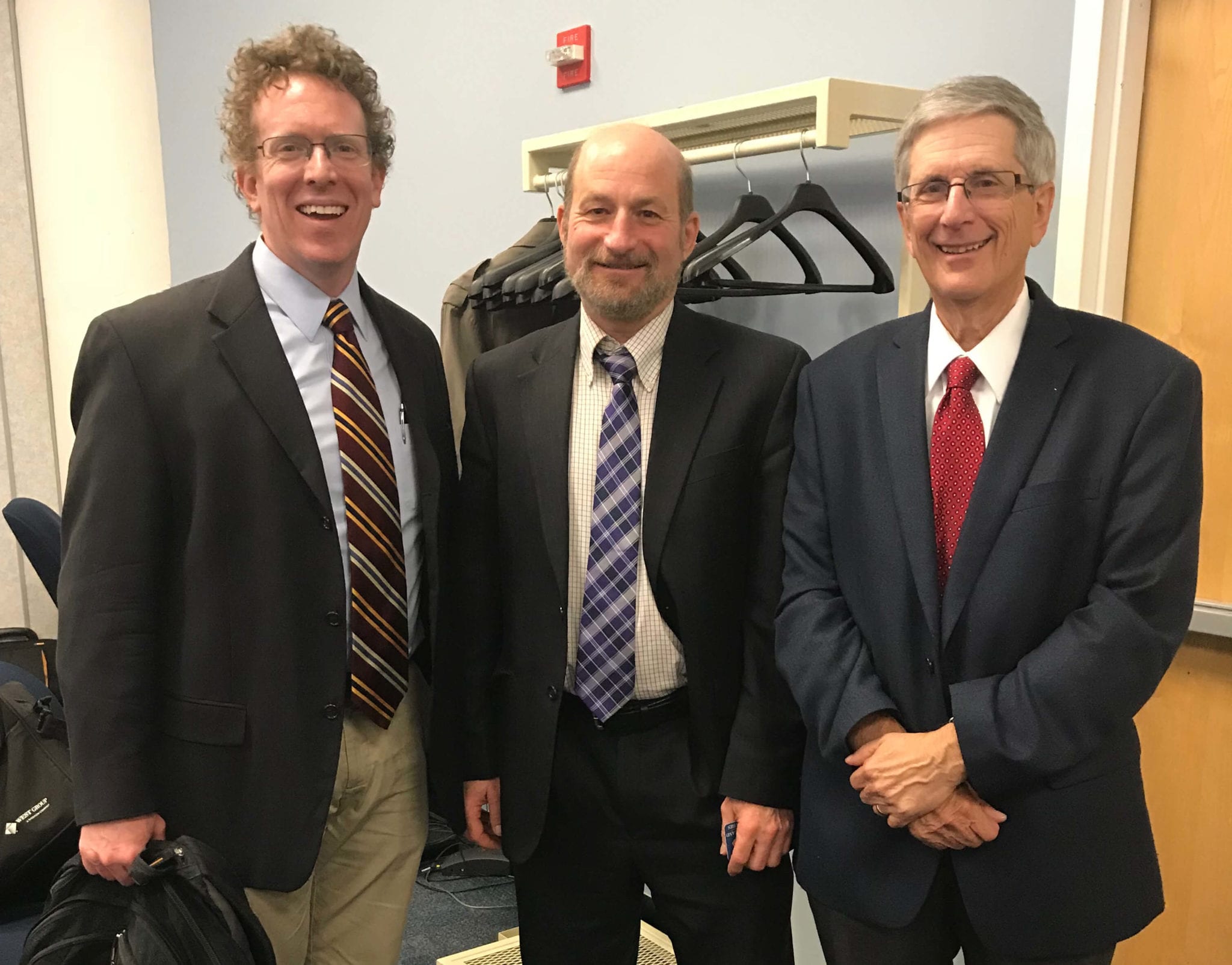The Maryland Commission on Climate Change (MCCC) has been tasked by the state with devising a plan to meet its legal target of a 40% cut in GHG emissions by 2030. On May 31, the MCCC’s Mitigation Working Group devoted its entire meeting to a heated discussion of whether carbon pricing should be part of the plan.
Two invited presenters from Climate XChange, Larry Liebesman and myself, and from Resources for the Future, Rob Williams, made a strong case for broad-based carbon fees. The opposition speaker from the Chamber of Commerce was ineffective, but several Working Group members also argued against the policy.
Presenters were asked to respond to four questions from the MCCC. Climate XChange and RFF presented solid evidence that carbon pricing can be designed to:
- Cut emissions in Maryland by 12%, which in combination with other policies is enough for the state to meet its 2030 mandate
- Provide immediate and continuing benefits to the economy
- Serve as a cost-effective means of addressing climate change
- Protect low and moderate income consumers
- Protect industries of concern, including manufacturing and agriculture
- Effectively put fees on electricity imports, preventing “leakage” of emissions to power plants in other states
“The knowledge and expertise shown by the panelists who supported a carbon price was astounding,” commented Jamie DeMarco, State Action Coordinator for Citizens Climate Lobby.
A second meeting that day focused on modeling the MCCC is planning, which will examine scenarios for how to reach the 2030 target. The MCCC will soon be deciding which policies to include in its scenarios – and carbon pricing will only make it onto the list with a strong advocacy effort. The Commission members, including the co-chairs, Michael Powell of Gordon Feinblatt, LCC (a “business community” appointee) and Stuart Clarke of Town Creek Foundation (which funds efforts in Maryland to address climate change), need to hear from the public that carbon pricing should be considered.
During the first meeting, Anne Lindner of the power generator Exelon, which operates a variety of plants and is another business representative, worried that in-state generators could lose business to out-of-state firms. We argued that because the proposed bill would impose fees on out-of-state generators there would not be an issue.
Jim Strong of the United Steelworkers of America expressed concern that carbon pricing could endanger high-paying manufacturing jobs, including members of his own union. I responded that the policy designs being proposed would provide sufficient rebates to fully protect manufacturing firms and farmers, two industries that we recognize are vulnerable to interstate and international competition. I also noted that manufacturing represents a small share of total emissions in Maryland, so it could be exempted from carbon fees (the 2016 law exempts it from all requirements in the plan for 2030) without greatly reducing the emission cuts that fees will yield.
Another Working Group member questioned whether the eventual $45/ton of CO2 emissions fee was enough to yield the 12% emissions reduction that we forecast, particularly in home use of fuel. I replied that our projection (conducted by CXC Research Associate August Granath) has most of the reductions coming from electricity generation, some of which is from lower sales of power, but most of which is due to fuel-switching from coal to natural gas and renewable energy sources.
Arjun Makhijani, Executive Director of the Institute for Energy and Environmental Research, argued that regulatory policies, such as appliance efficiency standards, are more effective than carbon pricing. I responded that we need both, that these standards, along with others such as federal auto efficiency standards and building codes, are essential to making the deep cuts in emissions that are essential.
After Working Group members finished, a brief period was left for questions from the public. David Costello, a former official with the Department of the Environment, which administers the Commission and the planning process, said that the state is far from meeting even its 2020 emissions target, and needs carbon pricing to reach the 40 percent goal for 2030.
Lindsey Mendelson and Mark Kresowik of the Sierra Club said that RGGI has been successful and that its lessons should be applied to transportation. Kresowik argued that government investment in programs to advance clean energy is more effective than price incentives, and so at least 50 percent of the money from carbon fees should be devoted to such investment.
All in all, Climate XChange impressed the Working Group with the sophistication of our policy proposal, the depth of the research we’ve done to back it up, and our well-reasoned arguments. But it will take a strong campaign first to get carbon pricing into the list of policies that the Commission models for the state’s plan, and then to get pricing into the plan. A draft is due by the end of 2018 and a final plan by the end of 2019.
“Delegate Ben Kramer, sponsor of the carbon pricing bill, the Regional Carbon Cost Collection Initiative, concluded after the bill’s hearing in March: ‘Passing carbon pricing legislation in Maryland will be a heavy lift’,” noted Pete Smith of Maryland Climate XChange’s Steering Committee. “The first step in the lift was writing the bill and getting it introduced in the House of Delegates. The second step will be to convince the Commission to take carbon pricing seriously.”









